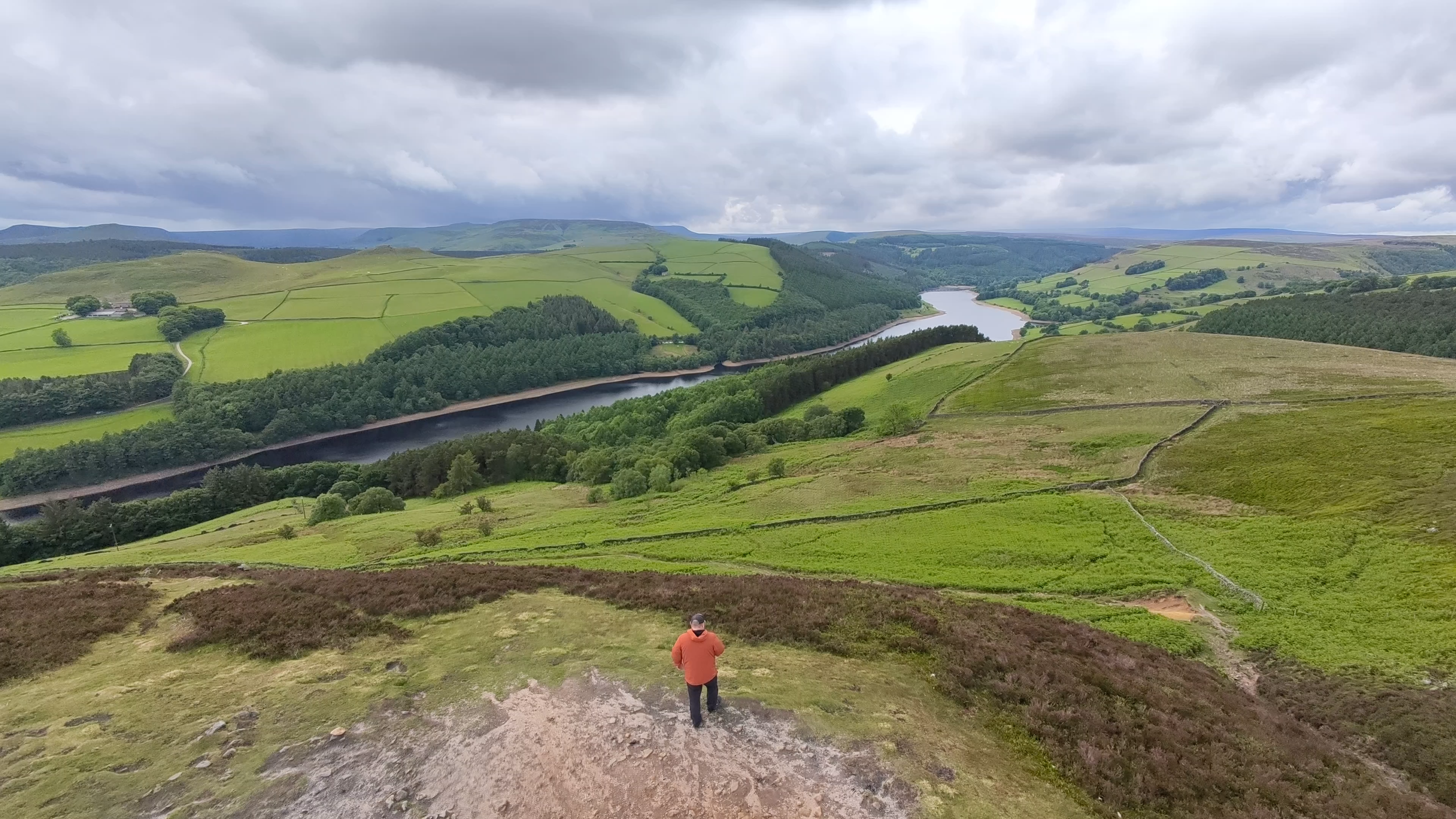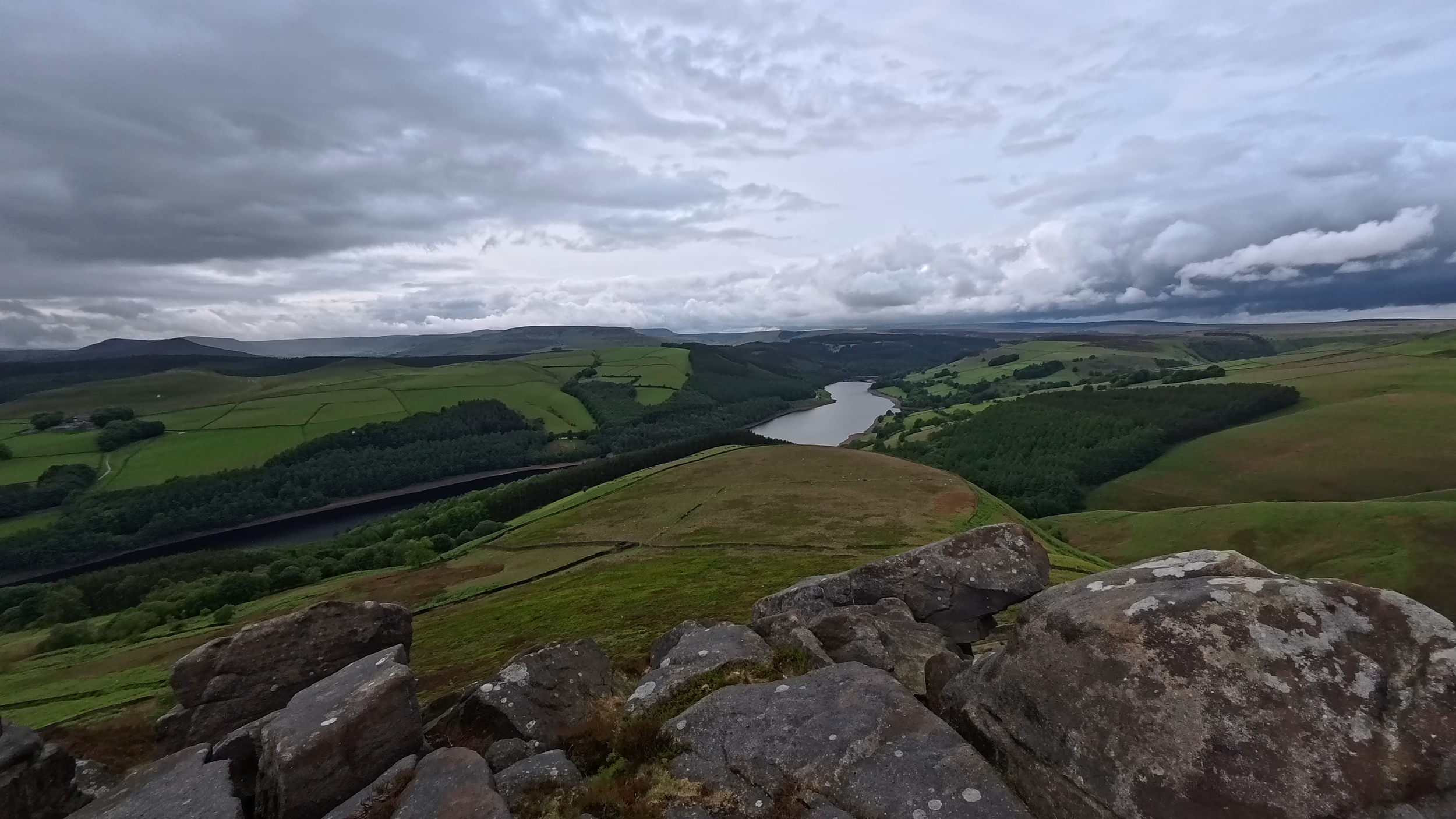No Gear And No Idea
No Gear and No Idea: Embracing the Simple Joy of the Peak District
Dry on the inside
Have you ever found yourself scrolling through endless online forums, bombarded by advice on what high-tech, expensive gear you absolutely must have to step foot on a trail? It's easy to feel overwhelmed, as if enjoying the great outdoors requires a significant financial investment and a degree in advanced layering. But what if I told you that, for many of the most beautiful and accessible spots, you genuinely need "no gear and no idea" – or at least, a very basic understanding and minimal kit?
This post is a testament to that philosophy, inspired by a recent, incredibly refreshing walk in the stunning Peak District, tracing a path from Cutthroat Bridge up to the majestic Whinstone Lee Tor, overlooking the iconic Ladybower Reservoir.
A Trip Down Memory Lane: The Bare Necessities of Childhood
The idea for this particular walk, and its underlying message, really hit me as I was packing – or rather, not packing. It took me back to when we were kids. Weekends and school holidays meant one thing: freedom. We’d tumble out of bed, chuck on whatever shorts and t-shirts were handy, pull on our trusty "Hi-Tec" silver shadow trainers, and head out the door. No backpacks, no pre-packed lunches, just a belly full of Sugar Puffs and an insatiable desire to explore. We wouldn’t come home until tea time, often drenched from pedalling through puddles or paddling down a river in an old tyre inner tube. We didn't worry about first aid kits; if you fell off your bike, you picked the gravel out of your knees, tried not to cry, and just got back on. It never bothered us – we just dried out.
How things have changed! Now, when I pack for even a short walk, I find myself instinctively reaching for my GPS device, SOS beacon, emergency blanket, an excessive amount of water, and more waterproofs than a deep-sea diver needs. For a "little walk up to Whinstone Lee Tor," I had to stop and ask myself: What’s the worst that can happen? If it rains, I get a bit wet. Do I really need all that stuff?
To prove a point, I deliberately left most of it behind. I walked in a £25 sale jacket from a supermarket – probably a "no-no" by many standards – and even dared to wear a cotton t-shirt, the ultimate cardinal sin in some hiking circles! There are so many rules out there that seem designed to deter you from stepping outside unless you’re decked head-to-toe in the latest fancy gear. Now, I'm not saying you need absolutely nothing, and it's always wise to be a little prepared for potential situations. But it truly depends on the circumstances.
The Walk: From Cutthroat Bridge to a Familiar View
FREE GPX Route Download HERE
This particular walk, starting conveniently at the car park near Cutthroat Bridge, is really easy-going. It's a steady uphill climb, but nothing too strenuous. The path can be a bit rocky, so you just need to watch your footing. For me, it was also a test for a recovering knee, so I opted for a gentle workout.
As you ascend, the landscape begins to unfold, revealing the breathtaking vista of Ladybower Reservoir. This is the view I never get sick of. Every single time I come here, it takes my breath away. The vast expanse of water, nestled amongst the rolling hills, is a truly iconic Peak District scene. It's a reminder of why these places hold such a special place in our hearts – accessible beauty that doesn't demand specialist equipment to be appreciated.
The view from Lead Hill
Gear or No Gear: The Spectrum of Hikers
On the way up, I saw the full spectrum of walkers. There were people clad in full Paramo gear, complete with massive backpacks bursting with supplies, seemingly ready for a polar expedition. And then there were others in slip-on shoes, shorts, and a simple hoodie. Normally, I’m in the first camp, with my backpack full of "eventualities." But today, I actively chose not to bother. It’s funny how you subconsciously judge others as you walk past, assessing if they're "suitably dressed" for the conditions. But for this truly easy walk, it highlighted an important point: sometimes, having too much "right gear" can actually be a barrier for people getting outdoors.
I’m certainly not recommending you tackle any hike in flip-flops, but you absolutely can get away with trainers. I was wearing trail runners – essentially, athletic trainers with good grip. Many traditional hikers insist on stiff, heavy hiking boots, but look at the long-distance hikers in the US on trails like the Appalachian Trail or the PCT – tens of thousands of miles, and the vast majority are wearing trail runners. This shows that comfort and suitability for the terrain often outweigh rigid adherence to traditional gear rules.
The Peril of "All the Gear, No Idea"
The phrase "all the gear, no idea" immediately springs to mind. I vividly recall being on Pen y Fan in the Brecon Beacons seven or eight years ago during a complete white-out. Despite the severe conditions, there were still crowds heading up. I saw one family where the parents were head-to-toe in expensive North Face gear and sturdy boots, yet their kids were in leggings, light Macs, and flimsy plimsolls. That, to me, was crazy. They had all the gear, but they had no idea about the appropriate attire for their children in those conditions. Those are the situations where more appropriate clothing is crucial, but you don't need to go mad with your own kit for every single outing.
Consider Alfred Wainwright himself, who inspired so many modern-day hikers with his detailed guides to the Lakeland Fells and his Coast to Coast Walk. He achieved all of this wearing old-school leather boots, a tweed jacket, a flat cap, and a simple cotton raincoat. No Gore-Tex, no fancy technical fabrics – just sturdy, sensible clothing. Getting a bit wet isn't usually too bad; you soon dry out, provided you stay warm. The real danger kicks in when you get cold and wet, that's when hypothermia becomes a genuine risk. Which is why, even for this simple walk, I did bring one small, lightweight item: a thermal emergency blanket. It weighs nothing and takes up virtually no space – a true "just in case" item.
The Mountain Rescue Story: Born from Tragedy
Speaking of "just in case," it’s crucial to acknowledge the vital role of the Mountain Rescue teams. You never want to call them out, but anything can happen – a slip, a twisted ankle, or a sudden change in conditions. In such moments, that simple emergency blanket might literally save the day.
It's a sobering thought, but the Peak District Mountain Rescue teams were actually formed out of tragedy in 1964. Before that, there was no coordinated rescue effort. There used to be an annual event for the scouts called the "Four Inns Walk," a challenging route across parts of the Peak District, connecting various pubs like the Cat and Fiddle, the Nags Head, and the Snake Pass Inn. It was a tough, long-distance hike.
One particular year, the weather forecast changed drastically and unexpectedly. Tragically, three of the scouts participating in the walk died. This devastating incident highlighted a critical need for a coordinated system to assist and rescue people in distress on the moors and hills. From that profound need, the Peak District Mountain Rescue Organisation was born. Today, these teams are entirely staffed by dedicated volunteers who tirelessly give their time to help others. I'll put a link in the description to find out more about our local Mountain Rescue teams; they do truly invaluable work.
Many call-outs, however, could be avoided. I’ve been on Kinder Scout, where the weather is even more prone to sudden shifts – you can literally experience four seasons in one day up there. And I've seen people completely unprepared. They don’t even know where they’re going, they might head up Jacob’s Ladder and then have no idea how to get back, often as darkness falls. No head torch, no warm layers, no food, no shelter. It can become incredibly dangerous, especially when the notorious Peak District fog rolls in, reducing visibility to almost zero. It’s terrifyingly easy to get lost in those situations.
The Simple Truth: Enjoying Whinstone Lee Tor
Despite the rain that eventually joined me on this walk (my £25 Tesco jacket, surprisingly, did a sterling job of keeping me dry underneath!), it was a testament to the fact that you can enjoy these places with minimal fuss. The rain eventually stopped, revealing the true beauty of Whinstone Lee Tor.
The whole point of this journey, and this blog post, is to tell you that you don't need fancy coats, expensive backpacks, or the latest "must-have" gear to enjoy places like this. Of course, that’s weather-dependent; if it’s winter, or there’s thunder and lightning, you'll absolutely want to rethink your approach. But for most ordinary days, a lightweight, showerproof raincoat, some kind of grippy trainers or shoes, and a basic understanding of your route is all you truly need to unlock these beautiful views.
This particular walk is incredibly accessible, suitable for all ages, with just a few rocky steps to navigate. Just keep an eye on where you're putting your feet. I felt so invigorated after this minimalist approach, it's making me consider a cheeky little wild camp next time!
If you haven't been here before, I definitely recommend it. I’ll include a link with the route and coordinates for where I parked the car down at Cutthroat Bridge. But please, treat these beautiful places with respect: take all your rubbish home with you and leave no trace. This really is an easy one, even if you’ve got no gear and no idea.
Thanks for reading! See you next time, hopefully with a backpack, a tent, and some glorious weather for that wild camp!




